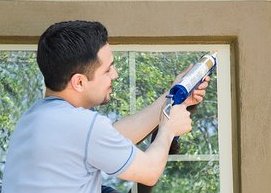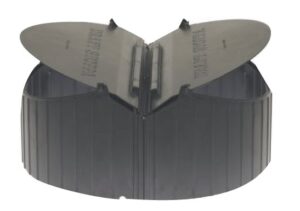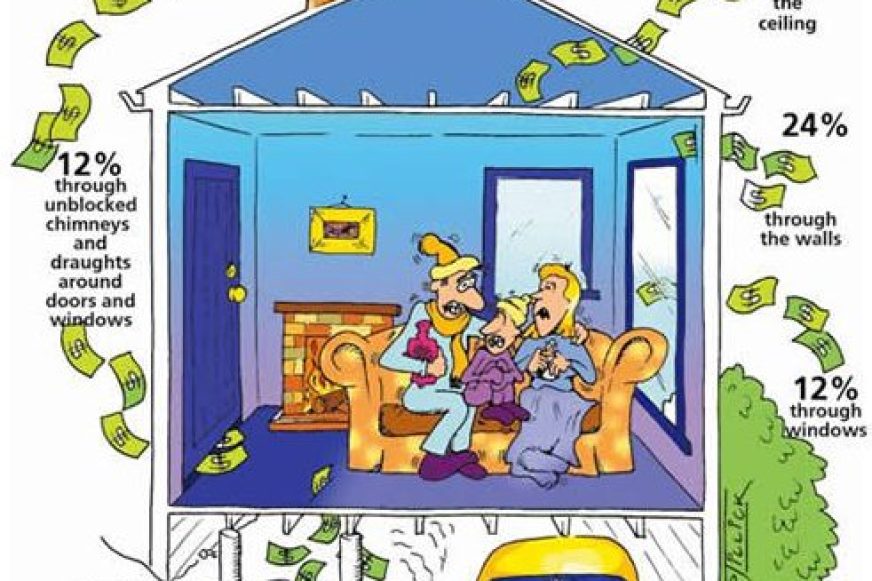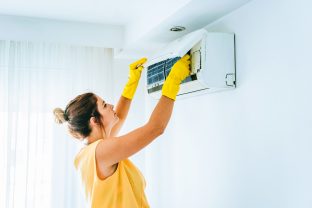Its now the middle of winter in parts of Australia and you may well be feeling the drafts. The first sign is often noticing a cool breeze around your feet whilst in the home. Not helpful when trying to keep warm!
Draft proofing a home is a simple, but time consuming DIY job that is worth doing just before winter sets in each year. This is because seals wear, new gaps form and things move in a building so something that was fine last year, may not be this year. A simple visual check is often all that’s required. But if you want to get technical, an incense stick on a windy day will help to find the sources of drafts, so will a Thermal Imaging Assessment.
Key points are always around the building envelope, that’s the external walls, floor, windows and roof. If you can minimise drafts in the building envelope you’ll find you have a more comfortable home to be in and it should cost a little less to heat (and cool).
First check your ceiling insulation is still where it should be. If you’ve had any work done in the ceiling, insulation batts often get moved and not replaced so a quick check is well worth it.
 In terms of draft proofing, start by looking at external doors. Check they close firmly and snugly against the frame, use rubber or brush seals (not foam) if you need to close up some gaps. Check pet doors seal as well as they can as well. Then do the same with the external windows. Check they close properly and snugly. With both doors and windows also look at where the frame meets the wall. Occasionally you’ll find gaps between the plaster and the frame, if so they should be sealed with an appropriate sealing product.
In terms of draft proofing, start by looking at external doors. Check they close firmly and snugly against the frame, use rubber or brush seals (not foam) if you need to close up some gaps. Check pet doors seal as well as they can as well. Then do the same with the external windows. Check they close properly and snugly. With both doors and windows also look at where the frame meets the wall. Occasionally you’ll find gaps between the plaster and the frame, if so they should be sealed with an appropriate sealing product.
 The next biggest issue is exhaust fans (usually in bathroom areas) that are not closeable. This lets heat in during summer, but worse, acts like a chimney in winter taking out hot air from the bathroom and surrounding spaces. If you have a bit of space above in the roof retrofit a ‘draftstoppa’, if not, consider replacing the exhaust fan with a self closing model. It will make using the bathroom more comfortable and still be there when needed.
The next biggest issue is exhaust fans (usually in bathroom areas) that are not closeable. This lets heat in during summer, but worse, acts like a chimney in winter taking out hot air from the bathroom and surrounding spaces. If you have a bit of space above in the roof retrofit a ‘draftstoppa’, if not, consider replacing the exhaust fan with a self closing model. It will make using the bathroom more comfortable and still be there when needed.
If you have chimneys in the home that aren’t used seal them top and bottom and stuff some insulation in them to totally draft proof them. If you do use it, ensure the damper is closed when not in use. There are also temporary chimney draft proofing products around, some not so great (the blow up balloon type), and some quite good (like the Chimney Sheep).
The other big draft issue is wall vents in homes. They had a practical purpose many years ago but now they are a source of heat loss in a home. Close up the internal vents (keeping the external ones open) to minimise loosing heating through the walls.
There are other sources of drafts in a home ranging from through gaps in floor boards, construction gaps and around skylights. But these are the main offenders.
We’ve created a Draft Proofing checklist based on a ‘room by room’ review. Click here to go to our Resources page and download it now.
If you want to get a specialist around to help, just let us know. We can bring in the Thermal Imaging Camera and show you where your home is loosing heat, and help you fix it.
Contact us if you’d like to know more about draft proofing your home








